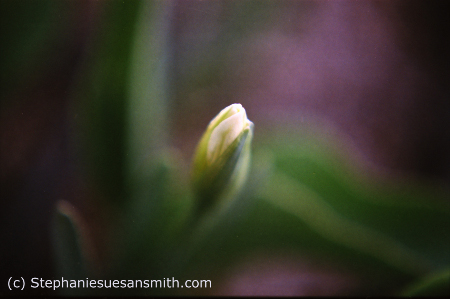Bluebonnets by Pat Newell.
Bluebonnets have been loved since man first trod the vast prairies of Texas. Indians wove fascinating folk tales around them. The early-day Spanish priests gathered the seeds and grew them around their missions. It’s not only the state flower but also a kind of floral trademark almost as well known to outsiders as cowboy boots and the Stetson hat. The bluebonnet is to Texas what the shamrock is to Ireland.
September and October are the months for planting Bluebonnets. The seed actually germinates in fall, their tops remaining small and inconspicuous while developing the massive root system throughout the winter, to be able to provide us with a riot of spring color during April and May. Although heat is needed to germinate the seed, cool weather is needed to develop the bluebonnet’s root structure. Many people wait until they see bluebonnet plants blooming in the spring to begin planting. It’s too late to plant seeds in the spring. Fall is the optimum time for chemically-scarified seed to be planted. Root systems established in early fall expand more and are able to produce a larger plant when top growth and bloom begins in the spring. Chemically-scarified seed should be planted no later than October 15 in North Texas (Dallas-Ft. Worth).
For years, wildflower lovers have planted bluebonnet seed and wondered what happened to the beautiful spring bloom which they expected. First of all, if common bluebonnet seed is used which has not been chemically treated (scarified), one doesn’t have much chance for success. The germination of non-scarified seed is sometimes less than 20 percent. To ensure rapid, high percentage germination, the bluebonnet seed has to be treated to remove inhibiting properties of the seed coat which otherwise prevent water uptake and the initiation of growth. This process of seed treatment is referred to as scarification.
Once scarified seed is in hand, you must first choose the ideal planting site. Ideal can be defined with one word, sunny. Bluebonnets will not perform well if grown in the shade or in an area which receives less than 8-10 hours of direct sunlight.
Bluebonnets will thrive in any soil as long as it is well drained, but soil that will not grow anything else will not grow bluebonnets either. When actually planting bluebonnet seed, forget the idea of just throwing or scattering the seed in the field! Much bluebonnet seed has been wasted as bird feed using this scattering technique. The seed must come in contact with the dirt, while disturbing the ground as little as possible. So, to get bare dirt to show, a very light pass with a tiller, barely scratching the surface, or just a rake and a bit of elbow grease is enough to allow the seed to come in contact with the dirt. Shallow soil preparation will limit the disturbance of dormant week seed. Press the seed into the soil by walking or rolling over the newly planted area. Do not cover the seed any deeper than 1/16 of an inch
Keep in mind that during early growth, bluebonnets form ground-hugging rosettes. The whole plant may not be over several inches tall but the leaves may cover an area the size of a dinner plate. This is a natural condition and regardless of how much one waters or fertilizes, the plant will not grow rapidly until the warmth of spring initiates flower stalks. No additional fertilizer needs to be added to fields of bluebonnets; in fact over fertilization causes large plants with few blooms. Remember, bluebonnets are actually very drought tolerant and as such is very susceptible to death from overwatering. Once plants become established (two or three weeks after planting), they are drought tolerant and one of Texas’ toughest natives, and certainly the logiest of wildflowers.
A personal note on seed choice. I planted scarified seed properly for a number of years, with no success whatsoever. I had all but given up when I discovered a vast area of blooms in a back pasture within a mile of our house. After obtaining permission, I gathered a large bag of drying seed pods. After collecting the seed, without any treatment other than having collected the seed nearby, I now have a spectacular show every spring.
